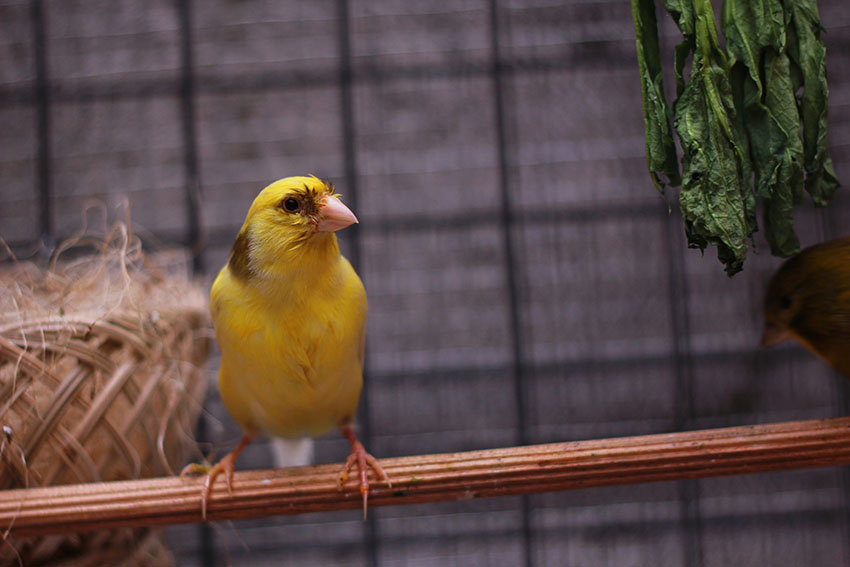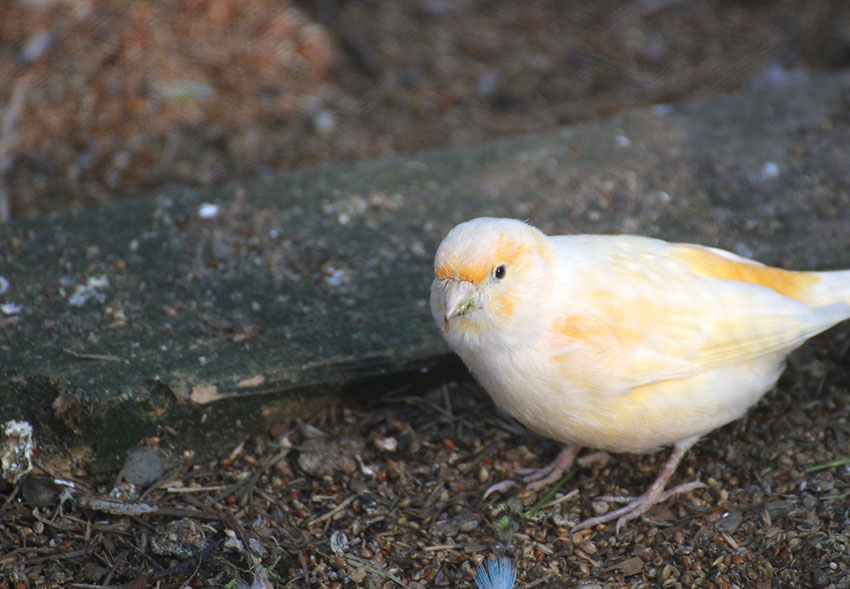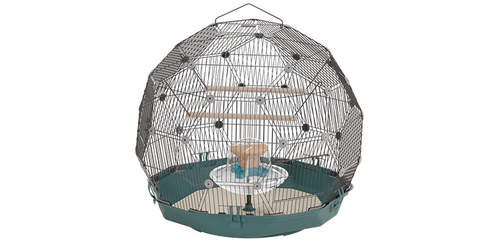In nearly all finch species the cock and hen build their nest together. With the exception of the Lavender waxbill (and related waxbills), and some of the less commonly kept species, most pet finches will be happy with a ready-made nest box. But given plenty of nesting material, even a seasoned artificial nest-box user like the Bengalese finch will sometimes opt to build from scratch.
Avoid installing wire and wicker nests, as these can catch toes, (and, in the case of wicker, are hard to clean). Wood is a good option, but plastic is the most practical as it can be cleaned and reused endlessly.

For birds of breeding age, nesting and chick-rearing is what it's all about
Finches like to add finishing touches and lining to their nests, so some nesting material should always be provided, even if the finches are not constructing their own nests as such. Good sources include strips of low-grade paper such as newspaper or kitchen towel, coconut fibre, and hessian fabric (burlap) cut into 7cm strips. Straw, hay and other vegetation are not recommended as they can rot and harbour bacteria and fungus. Long human hair and synthetic fibres like nylon should be avoided too, as they can lead to toe-snagging or even strangulation.
Finch Nest Problems
Reluctant nest-builders can be encouraged by placing a light near the box to advertise its hopefully irresistible presence. Very stubborn birds may require a nest box relocation.
On the other hand, you may encounter birds who just can’t stop nesting. Some Zebra finches and Bengalese finches, for example, keep on bringing new material to the nest, even clogging up the box and, if eggs or chicks are present, accidentally evicting the poor residents in extreme cases.
Some species, notably Zebra finches, build nests for a hobby, whether you want them to or not. They’re not fussy about the materials, or even the location. A seed tray is a common target for these nesting instincts. Removing the nesting material solves the problem. Switching to a seed dispenser rather than a tray is another way of discouraging the behaviour. Or you could simply provide extra food trays, and look upon the behaviour as a harmless hobby rather than a problem. These nests are very unlikely to provide a successful environment for successful breeding; but it's best to remove them or take them apart for rebuilding before they're complete.
Unsuccessful Nesting
The commonest cause of an abandoned nest is disturbance, either by other birds, external loud noises, things that go bump in the night, or over-inquisitive human/cat/dog faces poked against the cage. Finches will also leave their eggs if the food supplies are running low – they are cutting their losses and abandoning ship. This is why it’s essential to keep the food bowls brimming.

A constant supply of top quality food is essential if the birds are to breed successfully
If a hen ejects an egg or fledgling from the nest, it’s unlikely to be accidental. Eggs are discarded in this way if she sees them as unwanted intruders in the nest. This is sometimes down to her instinct for things not being right, in the case of an infertile or damaged egg, or one that has been handled without clean gloves. A stressful cage may also provoke the hen to this drastic action.
Sometimes a cock bird may decide it’s time to start afresh with the mating and nesting process, before the chicks are fledged. If he begins his courtship rituals prematurely, remove him from the cage before the hen is tempted away from her existing brood.




Comments
Mark, 21 February 2020
Since a North American Cardinal is a finch, could one be bred to a domestic yellow Canary?
Diana, 2 August 2019
I recently got an aviary for my three pair of super finches. It is 7 feet tall, 6 feet wide, and 2 feet deep. But how far from the ground should I place their nesting boxes? I don’t want fledglings to fall too far and maybe break a leg
Renald, 12 June 2019
Got a better nesting box, now my zebra finches will not go in or even start a nest.
Angela, 27 April 2019
I got a bigger cage for my finches. I cleaned out their nest boxes and put them in the bigger cage and now they won’t use either of the nest boxes. What happened? And how do I get them to use them again? I didn’t clean out the stuff they put in their nest box just the eggs.
Lyz, 7 April 2019
Once babie finches have left the nest, should they be removed from the aviary, when old enough would the dad try to mate with his young. Thankyou